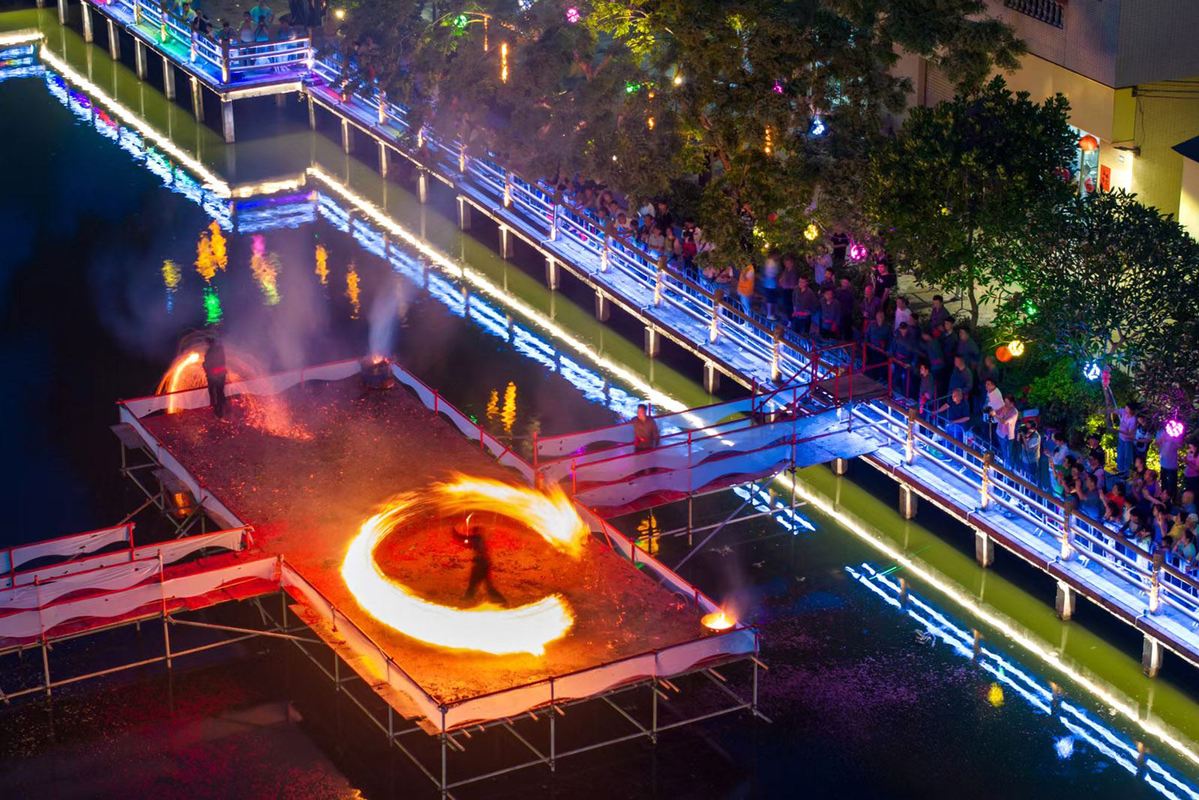
Baishi and Binri villages in Zhaoqing city, Guangdong province, were bathed in festivity on May 5 — the eighth day of the fourth month in the lunar calendar — as a grand feast got underway.
The thunderous beating of gongs and drums filled the air amid dragon and lion dances in perfect sync. Surrounded by flag-bearers elegantly waving red flags, four men carried the statue of Wu Ding — a legendary figure regarded as the founding ancestor of stone carving in the Duan inkstone industry — to the heart of the celebrations.
Duan inkstone-carving masters who inherited the craftsmanship, and cultural researchers took center stage, bowing before the statue to pay their respects.
Their apprentices served them tea as a gesture of respect and commitment to their studies. The annual Wu Ding Festival — an intangible cultural heritage of Guangdong — has been passed down for generations, with Zhaoqing making every effort to promote the tradition and cultural tourism.
Combining tourism and local culture is a sign of the times, reflecting the province's relentless efforts to take the travel business to greater heights. Travelers aren't content with a superficial visit to a city to take in the sights, but are delving into deeper links, wanting to experience a place's culture and the daily lives of its people.
The Guangdong authorities introduced measures this year to improve the quality of tourism and accelerate the construction of a strong tourism venue through deeper integration of culture and travel.